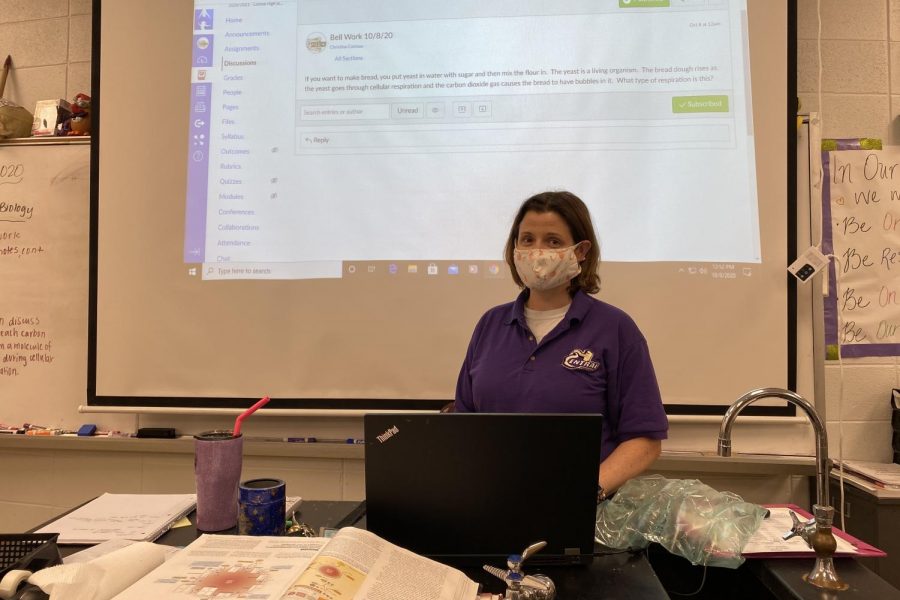Editorial: Is Zoom Fatigue Real?

THE CASE OF ZOOM FATIGUE — Science teacher Christina Cotreau teaching in-person students and at-home students through Zoom.
October 21, 2020
Due to COVID-19, many students have chosen to attend school online. For most, this is the first time they have had to regularly attend online meetings on platforms like Zoom. Like most things in life, online meetings have their advantages, but they also present several problems and disadvantages.
Science instructor Christina Cotreau considers zoom a “necessary evil”. She noted that she dislikes the program but thinks it is helpful for the current situation.
“[It’s] the best option [that] we have,” shared Cotreau.
Likewise, world history teacher Brett Parrott commented on its situational effectiveness.
“[It’s a] useful tool, especially for the times we are living in,” shared Parrott.
Everyone can admit that Zoom has its benefits in schools. These benefits include allowing students to continue to receive an interactive education while maintaining social distancing, increasing the convenience of meetings, and allowing students to access resources they would not have otherwise. However, while some students have the ability to work well from home, other students face problems, such as “Zoom Fatigue.”
When asked what they think Zoom fatigue is, Angie Hentz, an advanced studies teacher, and George Eller, a special education teacher, said that they believe zoom fatigue means “students are tired of having full day schedules through Zoom. Because of this, they find it challenging to complete assignments.” Hentz and Eller’s answer aligns with student experiences.
Students and teachers at Central shared their thoughts on Zoom fatigue, as well as their experiences so far this semester.
Junior Jessyca Foster, an at home student, shared that her teachers keep zoom running for the whole class period. She feels that her peers “do stay focused during zoom meetings.” For Foster personally, she shared that she does not find herself getting tired, but she does find herself “getting bored due to the lack of hands-on school projects and labs.” Along with getting bored, Foster explained that often she gets distracted by her surroundings.
In August, Hamilton county was in Phase Two, meaning students that wanted to attend in-person school followed an alternating schedule. This schedule consisted of “A-Day” students attending school in-person on Monday and Tuesday and “B-Day” students attending in-person classes on Thursday and Friday. If it was not your assigned day to attend school in person, you attended school online. On Wednesday, all students attended classes online through Zoom.
Junior Zane Ferrying followed this schedule. He shared that he thinks Zoom fatigue is real. Ferrying also shared that although he does find himself getting bored and tired during Zoom calls, he finds himself feeling that way during in person classes as well.
Sophomore Mackenzie Farner is also an in-person student. She shared that she would turn her television off and lay her phone face down in an attempt to stay focused during Zoom calls. After a day of Zoom meetings, Farner said she found herself “really tired and with really bad headaches.”
Regardless of your opinion on Zoom meetings and the recent shift in education, it is clear that Zoom fatigue is a real thing affecting our teachers and students this school year.




